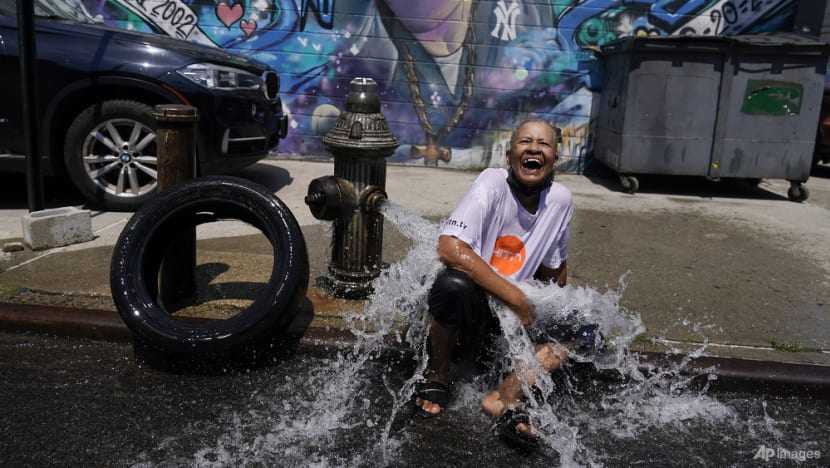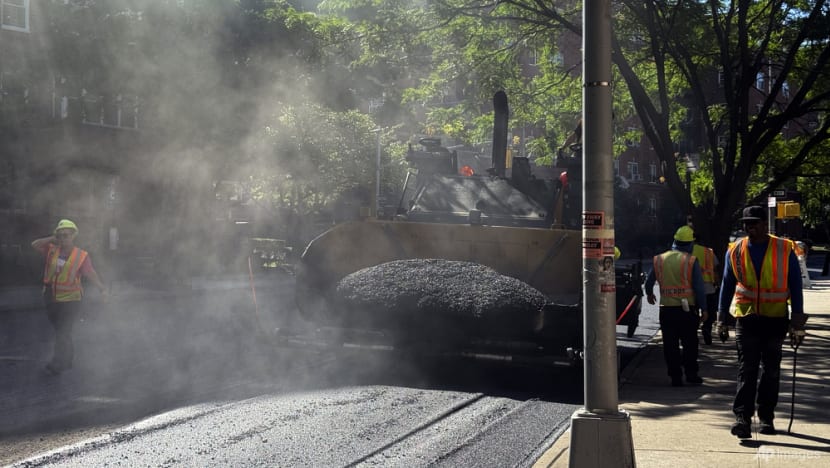‘The walls are sweating’: Campaigners seek laws to help vulnerable New Yorkers cope with extreme heat
Studies have shown that low-income and African-American communities are more vulnerable to heat-related illness and death.


This audio is generated by an AI tool.
NEW YORK: Campaigners are pushing for new laws to protect the poorest New Yorkers from a warming planet.
This comes as extreme weather becomes more common and heatwaves continue to plague the United States, especially during summertime when temperatures are at their highest.
The situation is even more dire in New York City, where much of the infrastructure is not designed to withstand intense heat.
“HEAT DISCRIMINATION” DIVIDES NEW YORK
Studies have shown that low-income and African-American communities in the city are disproportionately affected by worsening heatwaves, and are more vulnerable to heat-related illness and death.
Poor air quality is also a serious health risk in the poorer neighbourhoods, said observers.
“It’s very hot, extremely hot. We ain't got no nothing, no (air-conditioning). There’s a lot of fans, but it’s still hot. The walls are sweating,” said New York resident Wallyo Evans.
“I’ve got asthma, I can’t breathe. I have to keep hitting my inhaler because I can’t breathe.”
New York City’s health department figures show that heat stress kills about 350 people every year, with Black residents twice as likely to die than their white neighbours.
Every summer, the South Bronx area, for instance, where more than 90 per cent of residents are Hispanic or Black, becomes one of the hottest parts of the city.
Temperatures there average 4.5 degrees Celsius higher than the richer, majority-white neighbourhoods on the Upper West and East sides.
Dr Melissa Barber, who was born and raised in the South Bronx, told CNA that neighbourhoods such as hers have higher rates of poverty and lower access to air-conditioning, green space, and natural water.
“There’s certain areas that people always neglect,” said the founding member of South Bronx Unite, a collection of residents and community organisations working together to improve the social, environmental, and economic future of the South Bronx.
“Communities of colour are usually always neglected, and the same area of care that you would see in a Manhattan community is never done here.”

URGENT NEED FOR LONG-TERM SOLUTIONS
Besides neglect, there is also a lack of legislation, legal experts noted.
Queen Legal Services staff attorney Sarah Hainbach said: “Unfortunately, there is no law requiring that indoor temperatures be kept at a certain low level. There’s no cool law in the summer the way there’s a heat law in the winter.”
New York City Mayor Eric Adams said that will change by the end of the decade, with new legislation in the pipeline and a commitment to boost sustainability spending using state and federal dollars.
For now, the city has set up cooling stations across its five boroughs in public spaces including libraries, community centres and malls, to provide some relief from the heat.
But New York campaigners stressed that there is an urgent need for long-term solutions.
State, city and charitable funds make such actions feasible, including planting community gardens and installing air quality monitors that go towards addressing air pollution.
“Nobody else is going to bring those solutions,” noted Dr Barber.
“We have to actually be empowered enough to bring those solutions for ourselves.”














